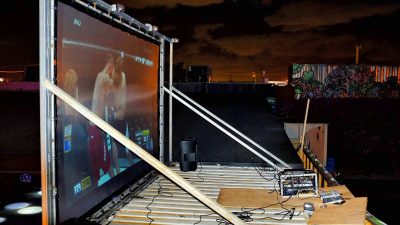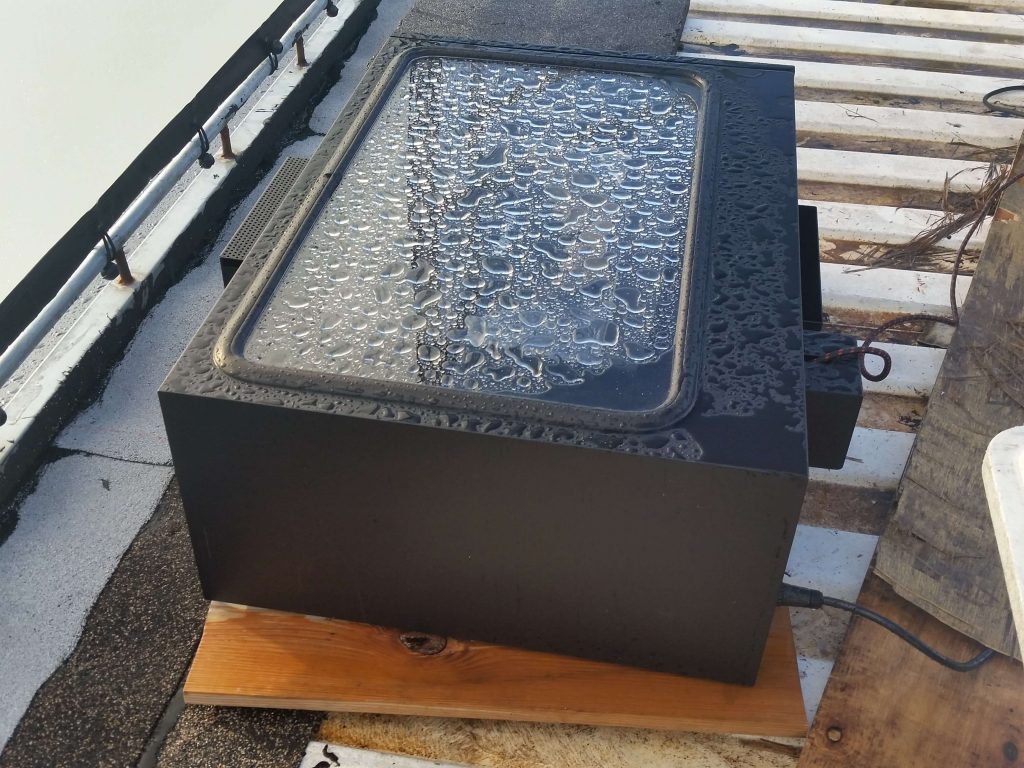This post was most recently updated on May 16th, 2019
You’re already committed to buying a brand new state of the art projector, the last thing left is to narrow the field and let the best projector rise to the top of the stack. Often times when we buy any product, we’ll go with a trusted brand name, then perhaps we’ll be drawn to that product based on a very advanced feature, like 4K projectors and laser capabilities as with the case of today’s high-end projectors.
A company we worked with decided to upgrade their projector with the very best projector their budget allowed, which was quite large($3000) They didn’t make a mistake with projector perse. The projectors picture quality is superb, very sharp, with great colors, and above all exceptional brightness even in a setting that has back-lighting. The problem that was unforeseen when they bought the projector was the type of projector that was chosen and the limitations that were placed on that projector. The limitations become glaringly obvious in this photo. First, the screen is welded solid and in no way movable. Secondly, a short throw projector would work but would have to be position on a makeshift plank of plywood, not an ideal position you want to hang your investment on. Finally, and most important, the bottom of the screen would be near level with the projector, instead of the screen being elevated and the images projected in an upwards angle, instead of a downward angle.
As we’ve mentioned in some of our reviews. Projectors today are very versatile. Some projectors can compensate for these complex configurations, but buying the best and most expensive projector doesn’t mean it will be able to perform in any and all situations optimally.
Let’s rewind and go through the whole scenario again where we would be buying the best projector for this situation.
Outdoor Projector or Indoor Projector
In more typical situations whether it be outdoor or indoor use, many of the top rated projectors can be used. Some manufacturers will recommend either indoor or outdoor use, so if your application is very location specific, go with what’s recommended by the manufacturer just to be on the safe side.
In this setting it’s obvious. The projector will not only be used outdoors, but it will be used outdoors exclusively. It turns out, the projector that was purchased was not intended for outdoor use. It was a large projector, almost larger than most inkjet and laser printers. It’s not a projector you want to move around and have to adjust constantly. It’s the type of projector you’d want to leave in place, set, then forget for most of the evening until it’s time to tear down.

Size Definitely Matters – Adjustability and Mobility
If the screen is immovable like most tend to be, then the more movable the projector has to be, since naturally the easier it is to make adjustments by moving the projector around. Even if I had to place a projector on a makeshift plank to display a full-screen image, it’s a whole lot easier having a small movable projector, than a huge projector box that I’d still have to move around after I get the proper distance from the screen.
Space is at a Premium – Short Throw and Ultra Short Throw
We normally will not opt to go with short throw projectors or ultra short throw projectors when it comes to outdoor movies screens, however, there are situations where it’s an absolute necessity. Why not just skip the short throw projector altogether, and just go for the ultra-short throw projector to cover every situation? Cost for one. Typically the ultra short throw projectors will cost more. If you assess your situation and needs carefully, an ultra short throw may be all you need. You’ll be buying the correct projector and saving the extra money you can apply to other extras, like sound systems or adapters etc. The ultra-short throw projector was definitely the way to go here. In addition, a small, portable projector that can be moved and propped up in irregular angles to make up in the viewing screens design flaws(yes the screen, while looking great and built sturdy, is flawed in its lack of elevation)
Because the viewing screen was installed first, without consideration of anything else, namely the projector, the distance of the projector etc. you as a buyer would have to factor that all in prior to any purchase. You may love a and have a particular projector model in mind, but that projector would have to be at the very least a short throw projector. The best choice though would be an ultra short throw. Not really a fan of the ultra-short throw projector? Then, if you decide to go with a regular projector, you’ll have to do some serious modifications to this screen. More welding, more metal curring, perhaps a smaller screen. that would in part alleviate some of the distance issues. All that time, money, and labor could easily be remedied by just choosing the correct projector after(and not before) the screen was all set up.
The Challenges for the Outdoor Projector Never End
In the previous article, we touched on sound systems. Sound systems in particular, and specifically, of the outdoor type. Not only did this screen present problems for the projector, configuring the sound was/is probably even more challenging, primarily due to the same problem with the projector. That being DISTANCE. Not only is the screen several feet on a roof, the amplified sound that would be coming out of the satellite dish connection would be coming out of the projectors output slot. This is done since the projector line is receiving the satellite line-in signal via of an HDMI cable.
Normal distance from the speakers to projector/amplification system was extraordinarily lengthened due to the elevation of the screen. The speakers could not be placed near the screen because outside noise from the dance floor would drown anything before it reached one viewer. The only way to deliver sound to the viewers were if the speakers were as close proximity to the viewers.
Almost any projector would have been capable of giving decent sound because really, it’s the job of the amplifier and speakers to deliver the big sound. Normally when you set up the outdoor sound system, you always want to get a rough estimate of the number of people in the audience. Unfortunately, in this situation, that piece of information alone would not be able to guarantee you the sound system you use will be able to get the job done. If there’s significant crowd, music and outside noise you have to compete with, you have to be prepared to use a very high powered amp. Again, you could have a DJ next to your viewers playing music with 100’s if not over 1000’s watts blaring away, this is what you’re contending with. You’ll probably become a sound guy/gal, as much as a movie/projector person during the entire process. What you’ll begin to realize is that there are 2 main parts that have to come together, picture and sound, both separate logistical parts, but both have to be coupled together.
Did We Mention Weather?

With all the downside and restrictions of an immovable outdoor movie screen, there comes at least one huge benefit. You don’t know to worry about really high winds, one of the biggest challenges you’ll face during outdoor movie setups. You still have to be guarded against rain and precipitation at any time putting a halt on your event. We have to be realistic though, there are very few projectors on the market today that will hold up to a good hard rain. Yet another reason why during outdoor events you really don’t want huge, heavy projectors that can’t be shut down and tucked away from the damaging rain at a moments notice. The real die hard outdoor movie owners will sometimes buy weatherproof metallic cases as was the case here, but the important thing to remember is, when you’re dealing with outdoor movies and events, you have to be more hands-on, there’s more prep and monitoring that changes with the day and conditions. Some prefer to just set the projector, forget it for a few weeks and believe that over time the wear and tear won’t set in. If anything, the wear and tear will come sooner than later. We’re talking about a very delicate and high precision electronic equipment, along with screens that like everything from roof shingles to car paint, will succumb to the elements at some point.
Conclusion
These non-typical movie/event setups make you realize how versatile these projectors and viewing screens can really be. You could at least rest and be reassured that if you could set up a great viewing projector, screen, and sound system outdoors, in some extreme conditions and circumstances such as this, then setting up your typical indoor home movie theater in windless rooms where light and volume can be easier to control becomes a real breeze.
